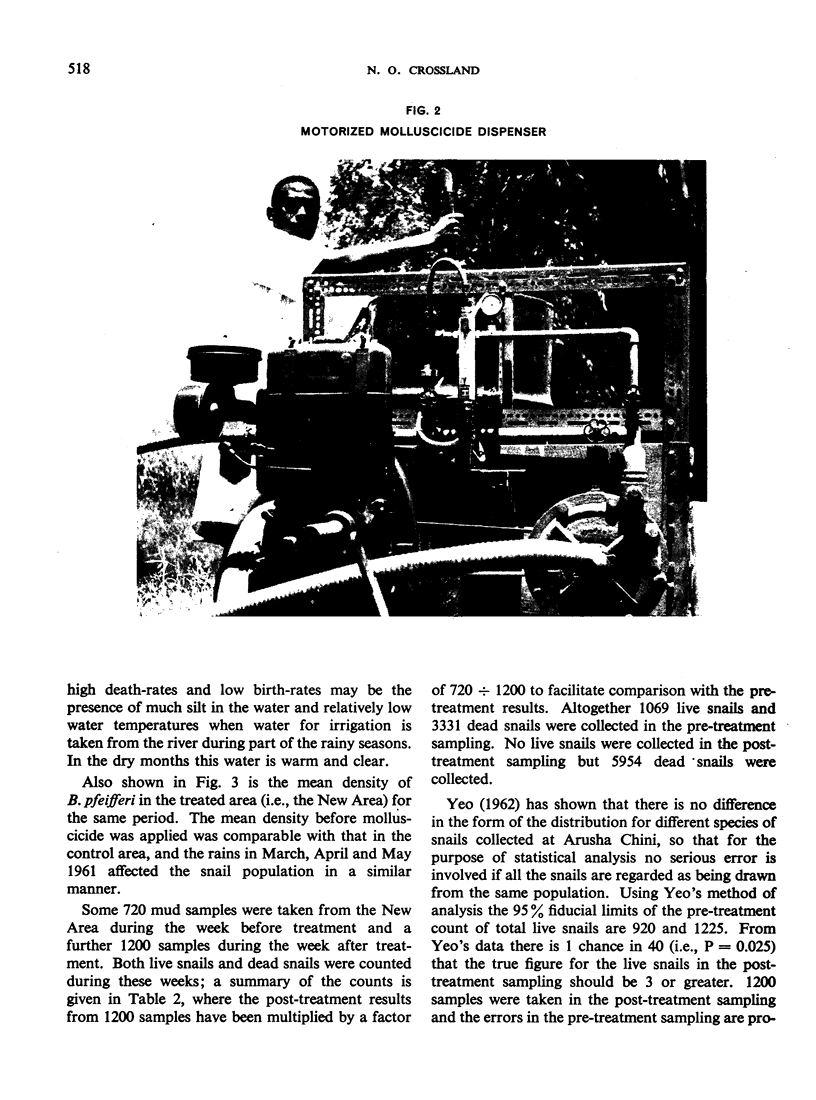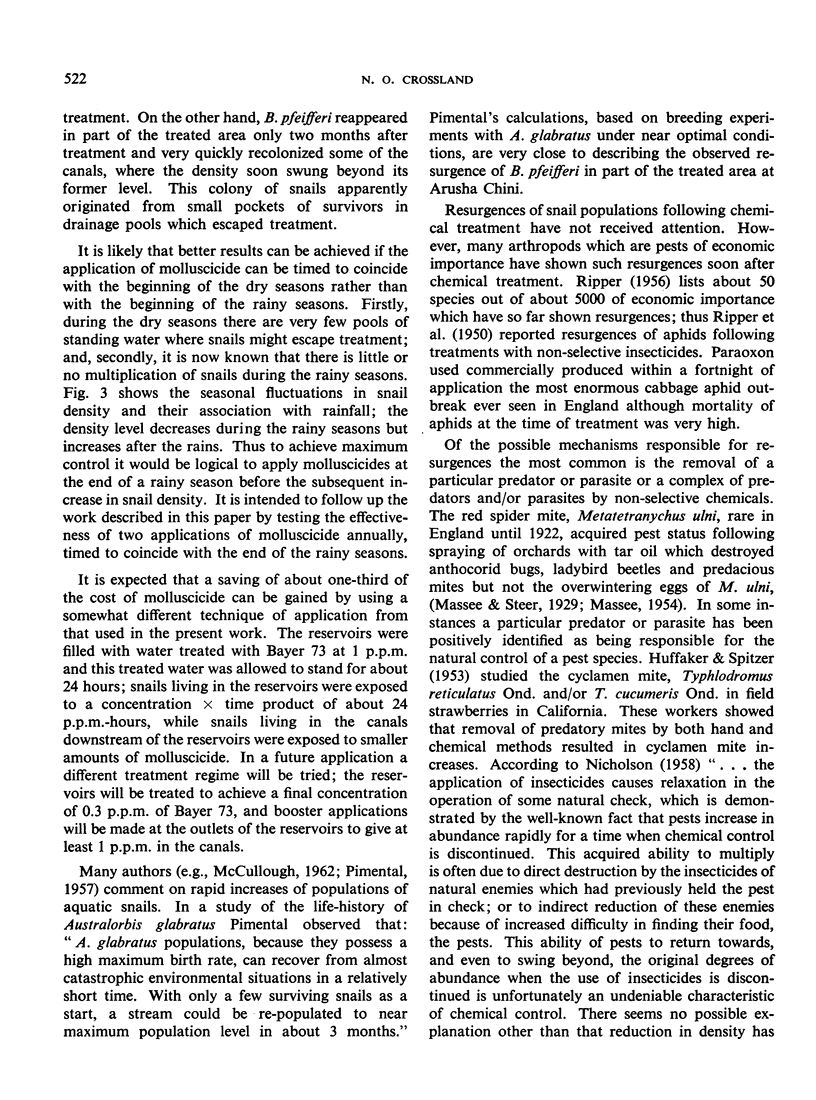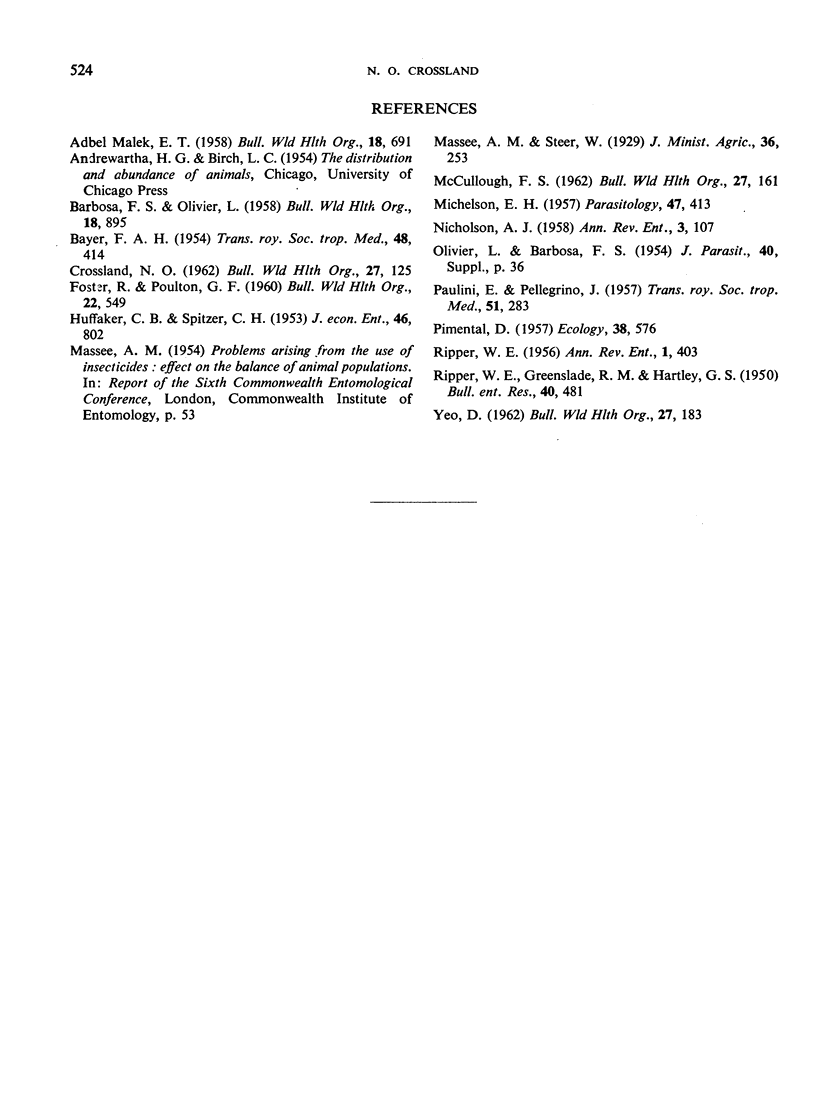Abstract
The author describes a large-scale experiment in which the molluscicide Bayer 73 (Bayluscide) was used in an attempt to eliminate Biomphalaria pfeifferi, the snail host of Schistosoma mansoni, from an irrigation system in Tanganyika. Applied at a concentration of 1 p.p.m., the molluscicide gave a very high kill of snails and much of the treated area remained completely free of vector snails for seven months after treatment. However, there were a few survivors in small pockets associated with a drainage area that became flooded during heavy rains coincident with the application of molluscicide. From these survivors a dramatic resurgence of snails occurred in some of the treated canals. This resurgence may be analogous to similar phenomena observed in some insecticide work. The suggestion is made that removal of parasites and predators, in particular trematode parasites, by a molluscicide might increase the snail's capacity for repopulation. Studies of the seasonal fluctuations of snail population density in an adjacent, but separate, irrigation system suggest that molluscicide applications would be more effective if timed to coincide with the end of the rainy seasons.
Full text
PDF









Images in this article
Selected References
These references are in PubMed. This may not be the complete list of references from this article.
- BARBOSA F. S., OLIVIER L. Studies on the snail vectors of bilharziasis mansoni in North-eastern Brazil. Bull World Health Organ. 1958;18(5-6):895–908. [PMC free article] [PubMed] [Google Scholar]
- BAYER F. A. Larval trematodes found in some fresh-water snails: a suggested biological method of bilharzia control. Trans R Soc Trop Med Hyg. 1954 Sep;48(5):414–418. doi: 10.1016/0035-9203(54)90142-x. [DOI] [PubMed] [Google Scholar]
- CROSSLAND N. O. A mud-sampling technique for the study of the ecology of aquatic snails, and its use in the evaluation of the efficacy of molluscicides in field trials. Bull World Health Organ. 1962;27:125–133. [PMC free article] [PubMed] [Google Scholar]
- FOSTER R., POULTON G. F. An apparatus for the prolonged and accurate dispensing of suspensions and solutions. Bull World Health Organ. 1960;22:549–554. [PMC free article] [PubMed] [Google Scholar]
- MICHELSON E. H. Studies on the biological control of schistosome-baring snails; predators and parasites of fresh-water mollusca: a review of the literature. Parasitology. 1957 Dec;47(3-4):413–426. doi: 10.1017/s0031182000022101. [DOI] [PubMed] [Google Scholar]
- PAULINI E., PELLEGRINO J. Influence of infection with Schistosoma mansoni on the susceptibility of Australorbis glabratus to copper sulphate. Trans R Soc Trop Med Hyg. 1957 May;51(3):283–284. doi: 10.1016/0035-9203(57)90029-9. [DOI] [PubMed] [Google Scholar]



